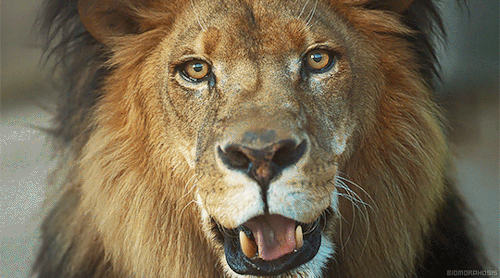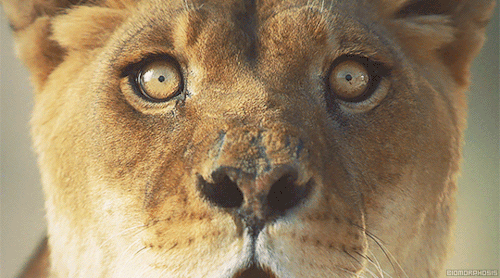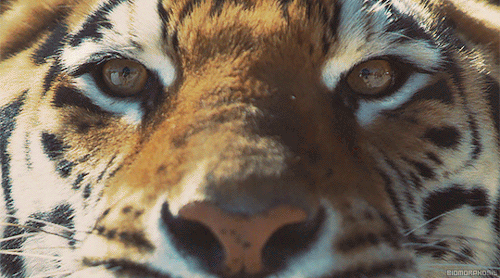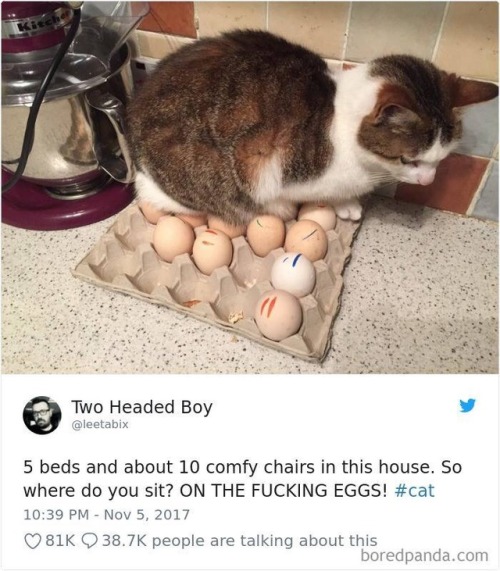Ourvioletdeath - Inner Ramblings Of The Mind





More Posts from Ourvioletdeath and Others





the sketch of this was super old but I finished coloring it for WLF for 413 ohoh
it’s up as print!

Neurons have the right shape for deep learning
Deep learning has brought about machines that can ‘see’ the world more like humans can, and recognize language. And while deep learning was inspired by the human brain, the question remains: Does the brain actually learn this way? The answer has the potential to create more powerful artificial intelligence and unlock the mysteries of human intelligence.
In a study published in eLife, CIFAR Fellow Blake Richards and his colleagues unveiled an algorithm that simulates how deep learning could work in our brains. The network shows that certain mammalian neurons have the shape and electrical properties that are well-suited for deep learning. Furthermore, it represents a more biologically realistic way of how real brains could do deep learning.
Research was conducted by Richards and his graduate student Jordan Guerguiev, at the University of Toronto, Scarborough, in collaboration with Timothy Lillicrap at Google DeepMind. Their algorithm was based on neurons in the neocortex, which is responsible for higher order thought.
“Most of these neurons are shaped like trees, with ‘roots’ deep in the brain and ‘branches’ close to the surface,” says Richards. “What’s interesting is that these roots receive a different set of inputs than the branches that are way up at the top of the tree.”
Using this knowledge of the neurons’ structure, Richards and Guerguiev built a model that similarly received signals in segregated compartments. These sections allowed simulated neurons in different layers to collaborate, achieving deep learning.
“It’s just a set of simulations so it can’t tell us exactly what our brains are doing, but it does suggest enough to warrant further experimental examination if our own brains may use the same sort of algorithms that they use in AI,” Richards says.
This research idea goes back to AI pioneers Geoffrey Hinton, a CIFAR Distinguished Fellow and founder of the Learning in Machines & Brains program, and program Co-Director Yoshua Bengio, and was one of the main motivations for founding the program in the first place. These researchers sought not only to develop artificial intelligence, but also to understand how the human brain learns, says Richards.
In the early 2000s, Richards and Lillicrap took a course with Hinton at the University of Toronto and were convinced deep learning models were capturing “something real” about how human brains work. At the time, there were several challenges to testing that idea. Firstly, it wasn’t clear that deep learning could achieve human-level skill. Secondly, the algorithms violated biological facts proven by neuroscientists.
Now, Richards and a number of researchers are looking to bridge the gap between neuroscience and AI. This paper builds on research from Bengio’s lab on a more biologically plausible way to train neural nets and an algorithm developed by Lillicrap that further relaxes some of the rules for training neural nets. The paper also incorporates research from Matthew Larkam on the structure of neurons in the neocortex. By combining neurological insights with existing algorithms, Richards’ team was able to create a better and more realistic algorithm simulating learning in the brain.
The tree-like neocortex neurons are only one of many types of cells in the brain. Richards says future research should model different brain cells and examine how they could interact together to achieve deep learning. In the long-term, he hopes researchers can overcome major challenges, such as how to learn through experience without receiving feedback.
“What we might see in the next decade or so is a real virtuous cycle of research between neuroscience and AI, where neuroscience discoveries help us to develop new AI and AI can help us interpret and understand our experimental data in neuroscience,” Richards says.
The Ancient Dragon had awoken, looked over the terrified villagers… and immediately started gushing about how cute they were.
While putting your favorite condiment on a sandwich, you accidentally make a magical occult symbol and summon a demon.
The world is like a video game. Each thing you do affects your stats. Punch something? Your strength increases. Get hit? Your defence increases. Run? You get faster. As long as you do something, you can get better at it. Write about the person who devoted his life to raising his blinking stat.

Carl Sagan, who would’ve been 83 today, on the power of books and why reading is essential for democracy.
Este mes
Siento una soledad frio y terrible sin el calor de tu corazon,
La culpa fue mia, pero me duele sin tu amor
Quisiera haberte dicho esto el 2 de este mes, pero me dolia demasiado escribirlo
Perdi el amor de alguien increible y maravillosa, y honestamente no se que hacer sin ti.
Puedo decir todo esto ahora, porque ya te estas alejando de mi, y aunque lo lamento, yo se que es lo mejor.
Quiero ser mejor, porque algun dia, en algun futuro, yo espero encontrate y amarte otravez. Y cuando ese dia ocurre, espero que tu tambien quieras lo mismo.
Te amo con una furia y dolor y no puedo explicar.
Espero que estes contenta, amor, y aunque ya no lo crees por la manera que he estado actuando, te extrano, nada va cambiar eso.
-
 greenflamemage reblogged this · 2 weeks ago
greenflamemage reblogged this · 2 weeks ago -
 morphine-king reblogged this · 2 weeks ago
morphine-king reblogged this · 2 weeks ago -
 other-amusings-of-life reblogged this · 2 weeks ago
other-amusings-of-life reblogged this · 2 weeks ago -
 travissfragments liked this · 2 weeks ago
travissfragments liked this · 2 weeks ago -
 burntwingz reblogged this · 2 weeks ago
burntwingz reblogged this · 2 weeks ago -
 alex-of-876 liked this · 2 weeks ago
alex-of-876 liked this · 2 weeks ago -
 ovoooooooo reblogged this · 2 weeks ago
ovoooooooo reblogged this · 2 weeks ago -
 magickalfaes reblogged this · 2 weeks ago
magickalfaes reblogged this · 2 weeks ago -
 magickalfaes liked this · 2 weeks ago
magickalfaes liked this · 2 weeks ago -
 echo1331 reblogged this · 2 weeks ago
echo1331 reblogged this · 2 weeks ago -
 rikoxxlv reblogged this · 2 weeks ago
rikoxxlv reblogged this · 2 weeks ago -
 rikoxxlv liked this · 2 weeks ago
rikoxxlv liked this · 2 weeks ago -
 gerberamountaingirl reblogged this · 2 weeks ago
gerberamountaingirl reblogged this · 2 weeks ago -
 peacefulnae reblogged this · 2 weeks ago
peacefulnae reblogged this · 2 weeks ago -
 guillaube liked this · 2 weeks ago
guillaube liked this · 2 weeks ago -
 theangelinthesky-15 reblogged this · 2 weeks ago
theangelinthesky-15 reblogged this · 2 weeks ago -
 theangelinthesky-15 liked this · 2 weeks ago
theangelinthesky-15 liked this · 2 weeks ago -
 diaries-of-an-aries reblogged this · 2 weeks ago
diaries-of-an-aries reblogged this · 2 weeks ago -
 mymindisfullofshit reblogged this · 2 weeks ago
mymindisfullofshit reblogged this · 2 weeks ago -
 11red-arrows reblogged this · 2 weeks ago
11red-arrows reblogged this · 2 weeks ago -
 11red-arrows liked this · 2 weeks ago
11red-arrows liked this · 2 weeks ago -
 tavaresnotsosecretjournal reblogged this · 2 weeks ago
tavaresnotsosecretjournal reblogged this · 2 weeks ago -
 iaintshitdoe reblogged this · 2 weeks ago
iaintshitdoe reblogged this · 2 weeks ago -
 durlaneze liked this · 2 weeks ago
durlaneze liked this · 2 weeks ago -
 long-lasting-memories reblogged this · 2 weeks ago
long-lasting-memories reblogged this · 2 weeks ago -
 obscuraluxx liked this · 2 weeks ago
obscuraluxx liked this · 2 weeks ago -
 wildones777 reblogged this · 2 weeks ago
wildones777 reblogged this · 2 weeks ago -
 diaries-of-an-aries liked this · 2 weeks ago
diaries-of-an-aries liked this · 2 weeks ago -
 lucid-transcendence reblogged this · 2 weeks ago
lucid-transcendence reblogged this · 2 weeks ago -
 maxtimiii reblogged this · 2 weeks ago
maxtimiii reblogged this · 2 weeks ago -
 therealmimilove reblogged this · 2 weeks ago
therealmimilove reblogged this · 2 weeks ago -
 therealmimilove liked this · 2 weeks ago
therealmimilove liked this · 2 weeks ago -
 long-lasting-memories liked this · 2 weeks ago
long-lasting-memories liked this · 2 weeks ago -
 itslindaabeandaaa liked this · 2 weeks ago
itslindaabeandaaa liked this · 2 weeks ago -
 un-1knownpizza reblogged this · 2 weeks ago
un-1knownpizza reblogged this · 2 weeks ago -
 tirelesslyoptimistic reblogged this · 2 weeks ago
tirelesslyoptimistic reblogged this · 2 weeks ago -
 jetsxdopestnerd reblogged this · 2 weeks ago
jetsxdopestnerd reblogged this · 2 weeks ago -
 am-i-r-9 liked this · 2 weeks ago
am-i-r-9 liked this · 2 weeks ago -
 miketuesday reblogged this · 2 weeks ago
miketuesday reblogged this · 2 weeks ago -
 intoxicated-daze reblogged this · 2 weeks ago
intoxicated-daze reblogged this · 2 weeks ago -
 tequilatease reblogged this · 2 weeks ago
tequilatease reblogged this · 2 weeks ago -
 imnotmadd53 reblogged this · 2 weeks ago
imnotmadd53 reblogged this · 2 weeks ago -
 twittney reblogged this · 2 weeks ago
twittney reblogged this · 2 weeks ago -
 nimphomaniaca liked this · 2 weeks ago
nimphomaniaca liked this · 2 weeks ago -
 gamillendamuz reblogged this · 2 weeks ago
gamillendamuz reblogged this · 2 weeks ago -
 sir-katlim liked this · 2 weeks ago
sir-katlim liked this · 2 weeks ago -
 lwmarshill liked this · 2 weeks ago
lwmarshill liked this · 2 weeks ago -
 r3volucija reblogged this · 2 weeks ago
r3volucija reblogged this · 2 weeks ago -
 venus-motels-stuff reblogged this · 2 weeks ago
venus-motels-stuff reblogged this · 2 weeks ago -
 venus-motels-stuff liked this · 2 weeks ago
venus-motels-stuff liked this · 2 weeks ago

